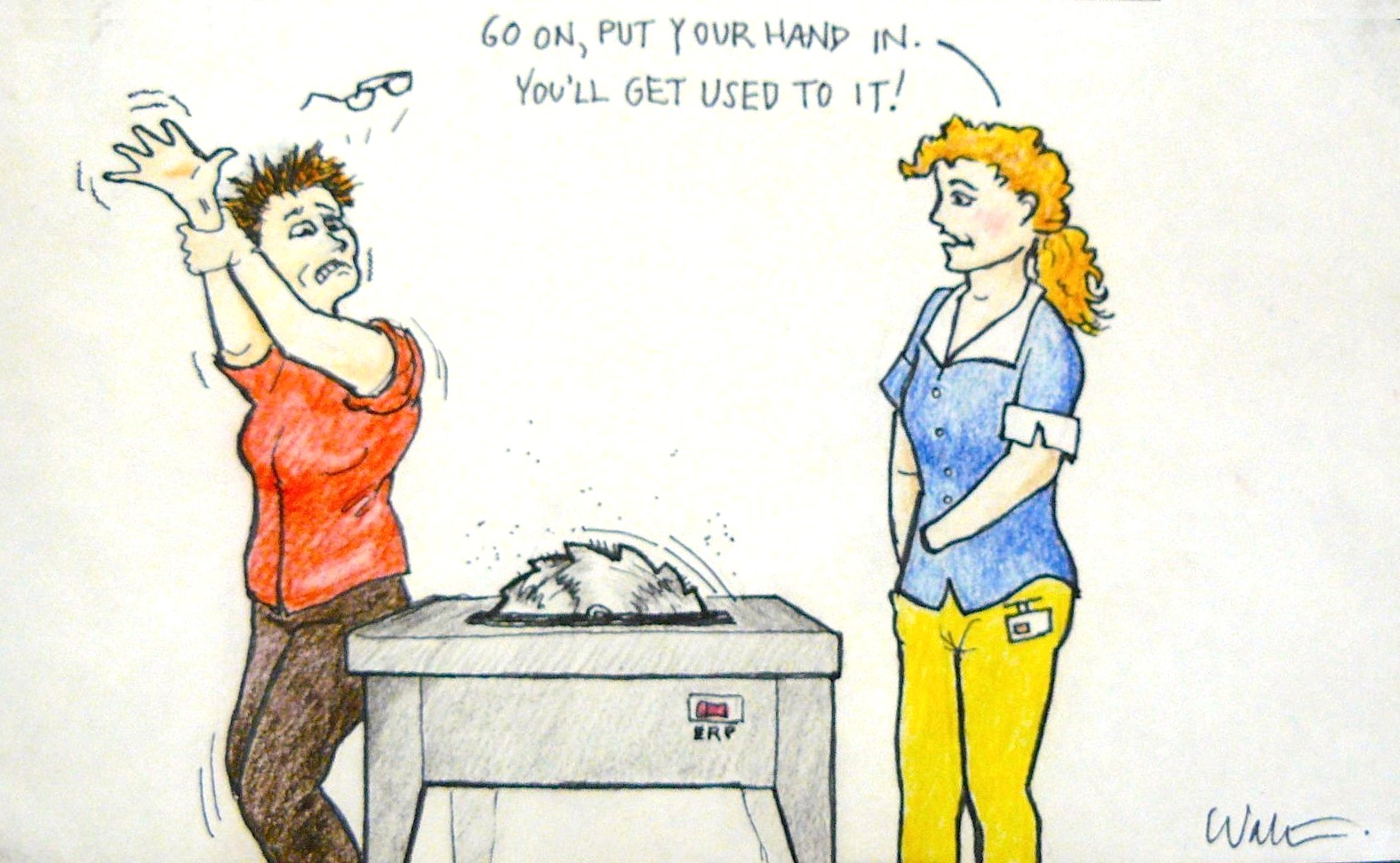When people find out that I work full time and have three children (currently) under five, two of which are twin boys almost three and still in diapers,
and I work full time, I generally hear the same thing: "I don't know how you do it!"
 |
| Did you hear, we come as action figures now? |
What I don't add, for most of them, is that I also struggle with OCD (Obsessive-Compulsive Disorder).
 |
| Pictured: Not OCD. |
I could write a whole post just about OCD and what it is and how it affects me and my family, and maybe someday I'll do that, but right now, I just give you a really brief explanation about what OCD is and isn't. Let's start with what it's
not: it's
not being excessively attentive to order, perfection, organization, and so forth.
It's also
not being unreasonably inflexible in one's habits or methods. That's not OCD, that's Obsessive-Compulsive Personality Disorder (OCPD), and yes, they are
two different,
distinct disorders.
 |
| Also not OCD. |
OCD-- true OCD-- is characterized by pervasive, unwanted, intrusive, disturbing thoughts (those are the obsessions). In an effort to get rid of the thoughts, the person with OCD engages in some kind of activity to counteract or neutralize them (and those would be the compulsions).
 |
| Nope, still not OCD. |
Some examples of common obsessions are the idea that you have accidentally hit a person, that you are about to unintentionally blurt out something inappropriate, that things around you are contaminated in some way. It's hard to explain to someone who doesn't experience it, because it sounds silly. Why would you get this idea in your head? Where would it come from? Why would you worry about that? The rational part of the OCD person's brain is asking the same questions, trust me.
 |
| Pictured: OCD |
We recognize how crazy it is. That just feeds back into the OCD and makes us try harder to suppress, avoid, or otherwise get rid of the "crazy" thoughts. OCD lives in the tiny cracks of uncertainty. I'm still not comfortable openly talking about the exact nature of my own obsessions, and that's not just my OCD talking.
This article does a great job going into more detail about OCD and what it's like to live with it.
Here are the important points to understand:
- It causes me huge amounts of anxiety on multiple levels-- both the obsessions themselves, then the existence of the obsessions, then the inability to stop obsessing over the obsessions, then the time and energy lost to the compulsive reassurance-seeking and repetitive checking
 |
| Also OCD. |
and the effect that has on my family.
- It is a real, actual mental illness. We are not being "difficult" or argumentative on purpose, and we are fully, shamefully aware of how crazy we sound when we try to explain our obsessions. It isn't something you can just "get over," or "stop worrying so much about" or just "think positively." If it were that easy, no one would ever have OCD (or any mental disorder) at all.
- OCD is extremely difficult to treat effectively. Unlike other anxiety disorders or depression, it usually only responds to very high doses of SSRI antidepressants (Prozac, Zoloft, etc.), if it responds at all. It does not respond to psychoanalysis; attempting to resolve any underlying issue just makes the OCD find something else to obsess over.
 |
Quintessential OCD.
|
- The only treatment that has evidence of being effective is Cognitive-Behavioral Therapy (CBT), which involves analyzing patterns of thought and behavior and how they interact and changing thoughts through behavior and vice versa. OCD specifically is treated with exposure and response prevention (ERP), a type of CBT that is most often used for phobias and OCD. It's exactly what it sounds like: you intentionally put yourself in a situation that exposes you to your obsessive fear, and then you deliberately avoid your compulsion. Basically, instead of putting your effort into compulsing to counteract or neutralize the obsessive thought, you put your effort into not compulsing, but just feeling the anxiety and letting the thought be there. This sounds stupid, but after a year I can say it really does work. You really can teach your brain to distract itself and move on.
- OCD never goes away. Most people develop it during childhood and have it for life. Most people treat it with a combination of medication and CBT/ERP.
 |
| Did I mention ERP is a slow, difficult, painful process? |
So where does knitting come into this?
For the "cognitive" part of CBT, emphasis is sometimes put on self-awareness, relaxation, and mental diversion techniques through "mindfulness." Tasks that are repetitive but require concentration-- like knitting-- are perfect focuses for meditation and relaxation. And, you know, bonus! I end up with a nice article of clothing or gift.
Don't get me wrong, I was holding it together before I even properly understood what was wrong with me. And I was making progress in therapy before I took up knitting. But knitting as a mindfulness technique has definitely helped the process, and raised my overall quality of life.








No comments:
Post a Comment